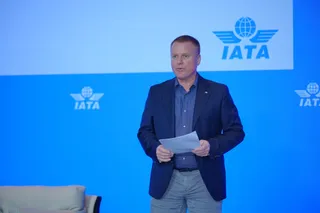Whither Simulation and Training?
Contact Our Team
For more information about how Halldale can add value to your marketing and promotional campaigns or to discuss event exhibitor and sponsorship opportunities, contact our team to find out more
The Americas -
holly.foster@halldale.com
Rest of World -
jeremy@halldale.com

Several days ago I was reviewing a manuscript on the history of simulation, replete with interesting images from the very early years of the 1900s to the 1970s and some of the early ‘full flight simulators’ used by a few airlines. These involved ‘flying’ over room-sized, handmade, model terrain.
That led me back to the earliest issues of our defence and airline journals, 35 and 30 years old respectively, and to the cover images. Triangular trees, very angular mountains and no recognizable people or vehicles in shot.
On the same day one of our defence simulation leaders posted a view of his latest vehicle model. It would be hard to differentiate from a photograph. In a follow-up note to my congratulatory response he commented that his company was also able to speed response and deliver completely relevant training to the end user.
Modeling and authoring tools have moved so far in the last few years that the technologies and training solutions the S&T industry can now deploy, or which users can deploy for themselves, are available to anyone who recognizes that a simulation solution to their training needs is far more effective, in all regards, than their previous solutions.
A challenge for many simulation and training suppliers, especially those who are committed to supporting the defence community (still the majority), is that the defence community is so unlike any of the others. The airlines, healthcare, oil and gas, mines, rail, cruise lines, et al, simply do not have to pass through the complex and costly definition and buying processes demanded by most militaries, and can usually articulate what they want in a few words: efficiency, global reach, improved safety and of course measurable ROI. They of course are not held accountable for the expenditure of tax payer dollars/pounds/euros.
It may still take years to finalise a purchase, though given the speed of change we all deal with this is less likely, but defence suppliers, especially the larger ones, simply cannot change their systems and processes to address more dynamic shorter-term needs. Many have tried and a few have succeeded, but either it is too difficult to allocate the people and resources needed for the time needed, or if they are very lucky a big defence win removes the need for them to diversify, or they hope it will.
So, in general, and so far, our industry has tended to produce S&T suppliers for each vertical defined by the necessary subject matter expertise; defence, airlines or healthcare being the primary targets. Of the ‘legacy’ S&T suppliers, only CAE as far as I am aware, though I would be delighted to hear of others, covers all three verticals, and of course my company, Halldale.
In the past six months we have produced features on a start-up S&T company that designs and manufactures its own training devices using 3D printers and is totally self-contained, even offering its surplus 3D printing capacity to others. In all three of our publications we have covered the use of Augmented Reality, Virtual Reality and Artificial Intelligence in providing practical solutions, today, for training. And we have written about para-dogs.
Especially in our civil aviation journal CAT we report on continual advances in industry-led training practice, from EBT (Evidence Based Training) a couple of years ago to CBTA today (Competency Based Education and Assessment). The airlines still lead the charge in the civilian world in these areas; surgery is still arguing that ‘surely we want “mastery” not just competency’ to which my response would be ‘of course, but in the short term could we have surgical competency from day one, I really do not want you practicing on me, my family or friends, as you still do.’ However even in healthcare things are changing and improving as we will be shortly be reporting.
In our recently closed Military Simulation and Training Awards, the range of submissions from ‘small businesses’ and their innovation, and the number of submissions for non-military uses provided yet more evidence of the change in our business. It is no coincidence that one of the defence training conferences, ITEC, has recently rebranded to IT2EC, recognizing the impact of new technology and new suppliers in the past few years. It is also why we started our STRS event last year because whilst the military has a lot to offer, and some of them can still afford to be at the bleeding edge of technology, their needs and processes are unique and their experience and usage is not fully transferable to the commercial sector.
All this leads me to ‘futurists,’ a few of whom I have recently heard speak and several I have viewed via TED Talks. Whilst I do not see many of us accepting devices plugged into our brains in the next few years, I could be persuaded that a chip inserted at birth and containing my health information is worthy of consideration. Equally whilst some of what they are predicting is beyond my 60 year old imagination, I am sure something like it is coming, and the statement that ‘we will see more change in the next 20 years than in the last 300’ whilst alarming is plausible.
So which companies and technologies will we be dealing with in three years time? I’d lay odds that we have not even heard of many of them, and equally that some, I hope not many, that we deal with today will not be here.
It has never been a more exciting, challenging and rewarding time to be a simulation and training industry member, or to be providing the information that they all need! If only we could get a few more people to join our community!
And a good few more to wake up and smell the S&T roses!

.png/r%5Bwidth%5D=320/7f2021f0-9a0d-11f0-b8f7-272ce5993c28-nano-banana-2025-09-24T11-07-03%20(1).webp)
